Product pictures
| Amount Per 9 oz | |||
| Calories | 250 Kcal (1047 kJ) | ||
| Calories from fat | 81 Kcal | ||
| % Daily Value* | |||
| Total Fat | 9g | 14% | |
|---|---|---|---|
| Saturated Fat | 6g | 30% | |
| Cholesterol | 40mg | 13% | |
| Sodium | 200mg | 8% | |
| Total Carbs | 33g | 11% | |
| Sugars | 33g | 132% | |
| Protein | 9g | 18% | |
| Vitamin C | 1.5mg | 3% | |
| Vitamin A | 0.2mg | 7% | |
| Calcium | 340mg | 34% | |
* Percent Daily Values are based on a 2000 calorie diet. Your daily values may be higher or lower depending on your calorie needs.
Find out how many calories should you eat.
Ingredients And Nutrition Overview
Best
choice Good
choice Poor
choice Avoid
it!
choice Good
choice Poor
choice Avoid
it!
-
WeightWatchers Points: 5.8, PointsPlus: 7, SmartPoints: 12
WeightWatchers Points are estimated by carbohydrates, fats, protein and fiber in product. They are not an affirmation of better quality or nutritional value of the product or its manufacturer. Only way to count for dieters. Less points are better.
Read more at Weight watchers diet review -
Over 30% of daily saturated fat!
Bad! More 30% of daily saturated fat!
For years Saturated fat was claimed to raise cholesterol levels and give us heart attacks. Today different studies refute this claim. They say, that replacing saturated fat with carbohydrates or refined starch or sugar is not changing the heart disease risk. Not processed carbs nor saturated fats are good for you. Only if you replace it with polyunsaturated fat, you'll get a reduction in heart disease risk. So try to have a balanced diet. -
Keep an eye on the cholesterol.
Today cholesterol is no longer a villain. The 2010's USDA guidelines told us to limit cholesterol from foods
Now experts say cholesterol is "not a nutrient of concern" because cholesterol from foods doesn't cause higher blood cholesterol levels.
Nevertheless try to consume no more than 300 milligrams daily.
This product contains more than 13% of your daily cholesterol intake.
If you still are on a low cholesterol diet, please keep in mind:
- nutritionists are not recommending you go out and binge on cheeseburgers and fries.
- 10% of your daily allowance can quickly become 50% when a hamburger turns into double cheeseburger.
-
Want to lower the cholesterol intake? Here are some advices:
- Try to limit your cheese, dairy and meat intake to one item per meal.
- Avoid meals with multiple sources of cholesterol (chicken with cheese, junk food)
- Try to indclude in your diet low- or nonfat dairy, seafood, legumes and nuts.
- Choose water instead of milk for your coffee.
-
Convert Salt tsps to Sodium mg easily
Salt (NaCl) is not excactly sodium (Na).
It is not right to use these terms as synonyms.
The FDA recommended limit of sodium is 2,300 mg per day (or even less - about 1500 mg while one is on low sodium diets).
This is much less than the weight of salt.
(5,750 mg per day or 3,750 mg for low sodium diet) and not so convenient to calculate.
Know how much sodium is in your salt - without a calculator:
1/4 tsp salt = 600 mg sodium
1/2 tsp salt = 1200 mg sodium
3/4 tsp salt = 1800 mg sodium
1 tsp salt = 2300 mg sodium -
13 tsp of sugars per serving
This volume includes both naturally occurring from ingredients and specially added sugars.
USDA tells us that last years each American consumed an average 130 pounds of caloric sweeteners per year!
That works out to 30 tsp of sugars per day approximately 480 extra calories!
Just to think: Eating just 200 more calories daily than your body requires for body functioning and exercise leads to a 20-pound weight gain in a year. -
Naturally high in Calcium
You get real, natural easy absorbing Calcium from this product, not as an artificial fortified ingredient.
This is great! Let's try to get the best from the real food, because we get too much from artificial ingredients nowdays. -
Carrageenan is an additive made from seaweed.
It is used as a thickener in products such as ice cream, jelly, chocolate milk, infant formula, cottage cheese.
It is a vegetarian and vegan alternative to gelatin.
It has been used for hundreds of years in Ireland and China, but only made headway into modern food processing in the last 50 years.
The processing steps after harvesting the seaweed include drying, grounding, filtration, treatment with potassium hydroxide, removal of cellulose by centrifuge, concentration by evaporation, drying, and grounding.
Interestingly, the Philippines account for the vast majority of the world supply of carrageenan.
In some animal studies, carrageenan was shown to cause intestinal lacerations and tumors.
A 2001 meta-study of 45 peer-reviewed studies concluded that carrageenan consumption may result in gastrointestinal malignancy and inflammatory bowel.
The FDA has approved carrageenan as safe, basing its decision on industry funded studies.
European agencies and the World Health Organization have also deemed carrageenan safe, with the exception of infant formula.
The fear is the a baby's gut may be unable to handle the large carrageenan molecules.
In some individuals carrageenan may cause intestinal discomfort or worse. -
For dieters: FoodPoints value is 6
* FoodPoints are calculated by Fooducate based on fats, carbs, fiber, and protein. They are not an endorsement or approval of the product or its manufacturer. The fewer points - the better.
-
Contains artificial flavors. Learn why
Companies add artificial flavors to products to make them taste better. They are created in a lab and the formulations are guarded as trade secrets. Flavorings can compensate for flavor loss during processing, substitute for ingredients, lower production costs and increase shelf stability. Artificial flavorings are cheaper to source than natural flavors and are perceived as "worse" than natural flavors. They are more stable (and usually less chemically complex) than natural flavors. Artificial flavors are not necessarily bad for you from a health perspective. however, people with food sensitivities or allergies may want to avoid artificial flavors if they are unnamed. You can always contact the manufacturer for more information.
-
Natural flavors added. Learn why
Companies add flavorings to make products taste better. They are created in a lab and the formulations are guarded as trade secrets. Flavorings can compensate for flavor loss during processing, substitute for ingredients, lower production costs and increase shelf stability. Natural flavorings are more expensive to source than artificial flavors, but tend to be better received by consumers. People sensitive to MSG, vegans, vegetarians and those with allergies should pay special attention to the phrase "natural flavorings" since glutamates, animal products or allergens may be the source of natural flavors. You can always contact the manufacturer for more information.
-
Learn about flavored milk
Flavored milk contains the equivalent of three teaspoons of added sugar per serving. You wouldn't add three teaspoons of sugar to your child's milk would you?
-
Learn about the problem with choc milk
click on the link to learn why serving your children chocolate milk may do more harm than good
-
Learn about Vitamin D, Milk and You
Vitamin D is an important vitamin - it helps us live longer, improves bone health and increases immunity. And it's easy to get - it comes straight from the sun! But the truth is that many people have a hard time getting enough. Vitamin D is not found naturally in many foods. That's why it's supplemented in milk. Fat helps in the absorption of D - keep this in mind if you drink nonfat milk. But is milk a good source of Vitamin D? Not exactly . . . Many studies have found milk contains less Vitamin D than it purports. And you've only got around 20-25% of Vitamin D in fortified milk - you shouldn't drink 4 glasses of a milk a day. If you're having a tough time getting enough D, don't rely solely on milk. Try and include D-rich foods in your diet, or consult with a health professional about taking supplements. You should never self-prescribe D supplements - get your levels tested first because Vitamin D can be toxic. New guidelines released in 2011 recommend 600 IU a day of Vitamin D, with the average requirement of 400 IU. See the link for a detailed chart on calcium and Vitamin D recommendations.
Allergens
Lactose Allergy, Milk Allergy, Corn Allergy
You Might Also Like
% RDI of Main Nutrition Facts
13%
of RDI* (250 calories) 255.15 g
-
Cal: 12.5 %
-
Fat: 13.8 %
-
Carb: 11 %
-
Prot: 18 %
-
0%25%75%RDI norm*
Calories Breakdown
- Carbs (53%)
- Fat (32.5%)
- Protein (14.5%)
Get Your Recipe of Health!
Follow RecipeOfHealth on Facebook!



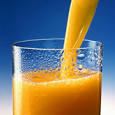
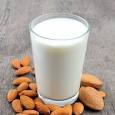
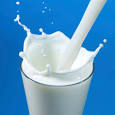

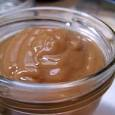
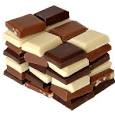
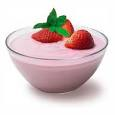


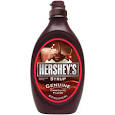
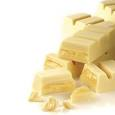


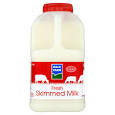
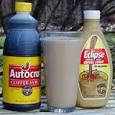
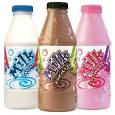
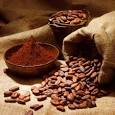









Add your comment